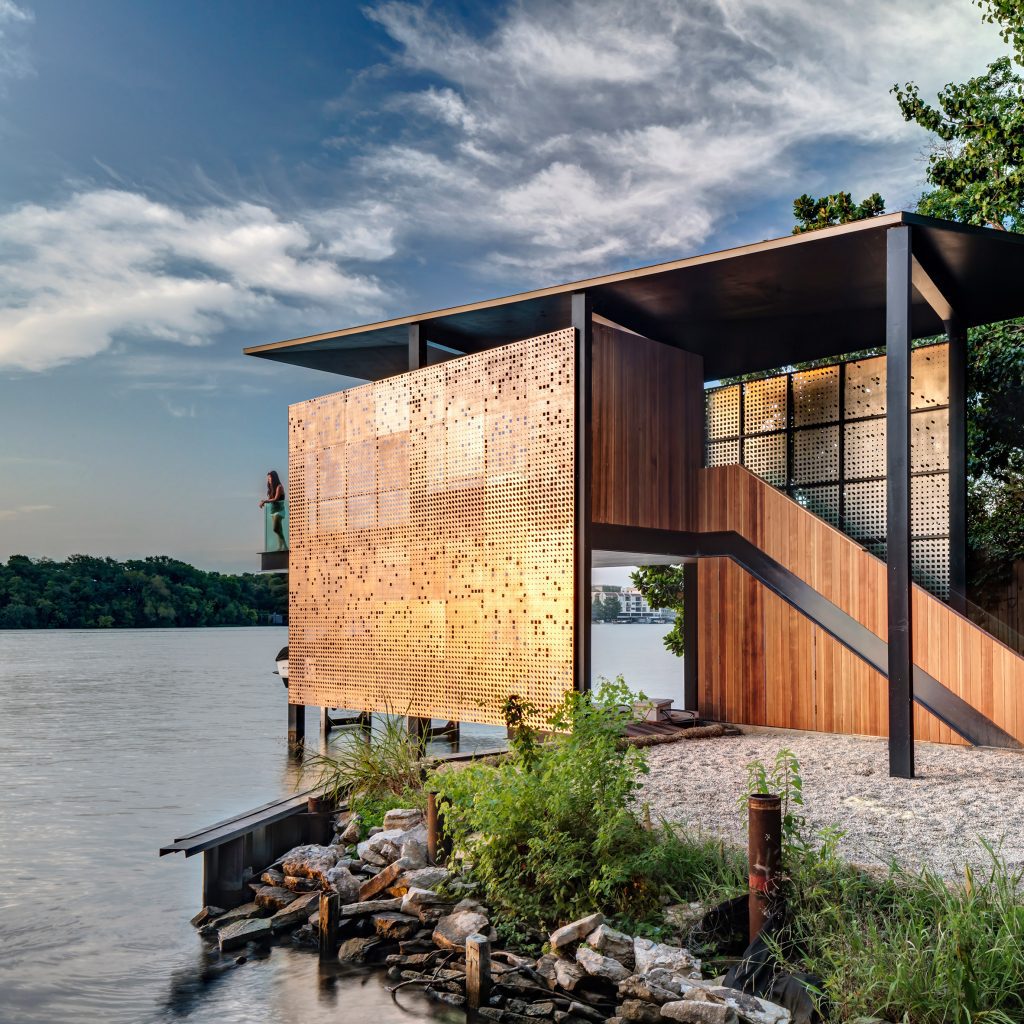Plan:b Arquitectos creates brick vacation home in Colombian tropical forest
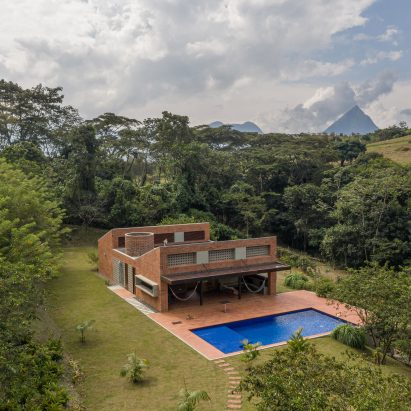
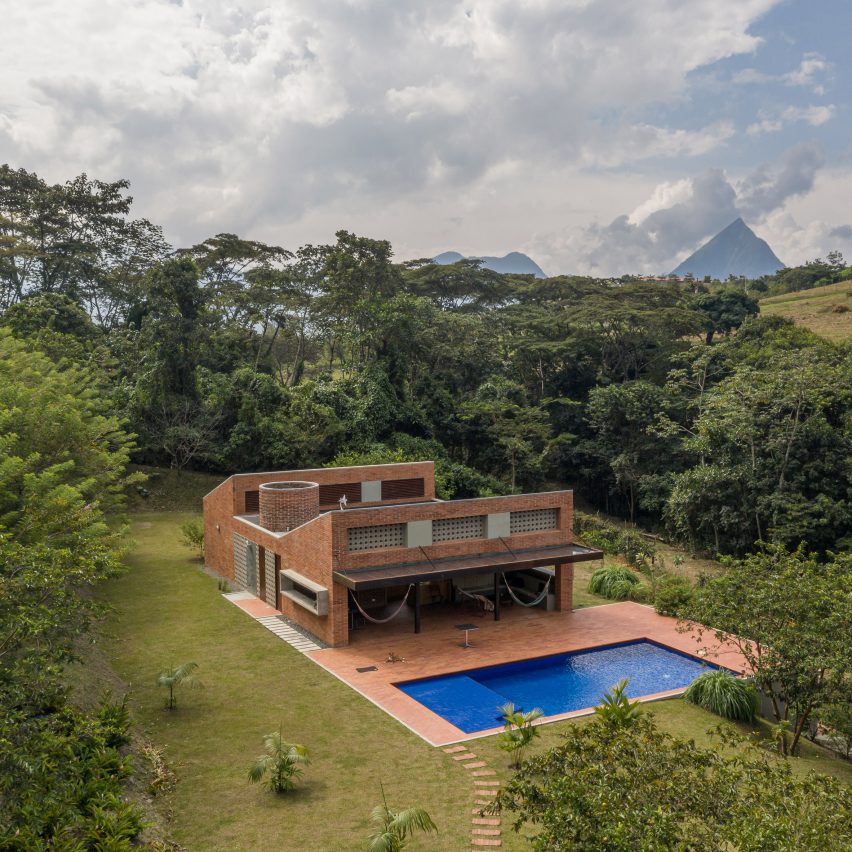
Brothers Felipe and Federico Mesa of Plan:b Arquitectos have designed a brick and perforated concrete holiday home for their families in the rural town of La Siria, Colombia.
House in La Siria, which sits on a narrow patch of land abutting the tropical forest and mountains around 120 kilometres south west of Medellin, was designed to be as compact as possible while using local material and building techniques.
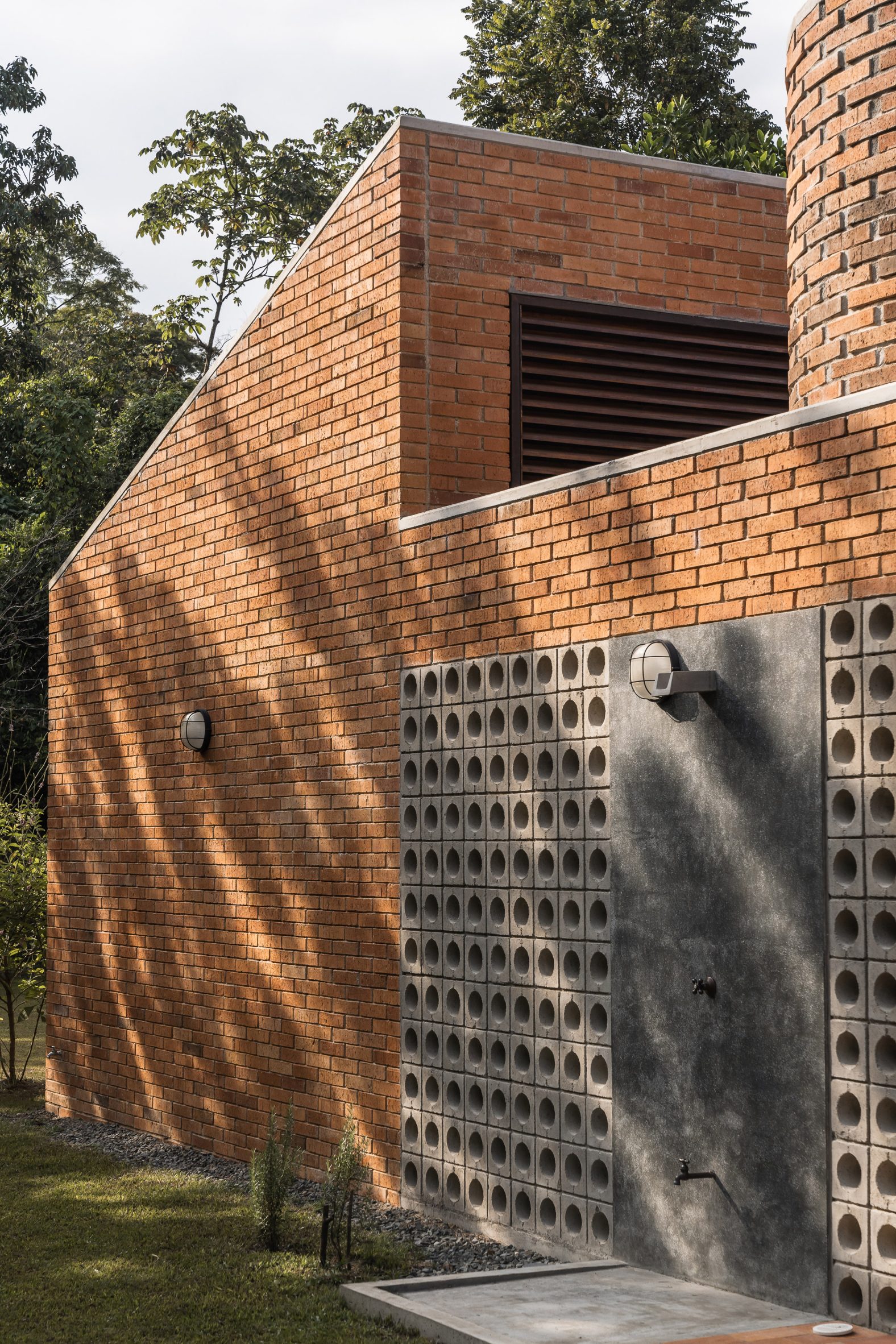 Brothers Felipe and Federico Mesa designed House in La Siria for their families
Brothers Felipe and Federico Mesa designed House in La Siria for their families
"We wanted to have an affordable house, flexible, built with local materials, but also with permeable spaces to take advantage of the tropical weather," said Felipe Mesa of Plan:b Arquitectos.
Permeability was achieved by opening up the back of the home with a double-volume area, a courtyard in the middle of the home, and using perforated concrete blocks to let in air.
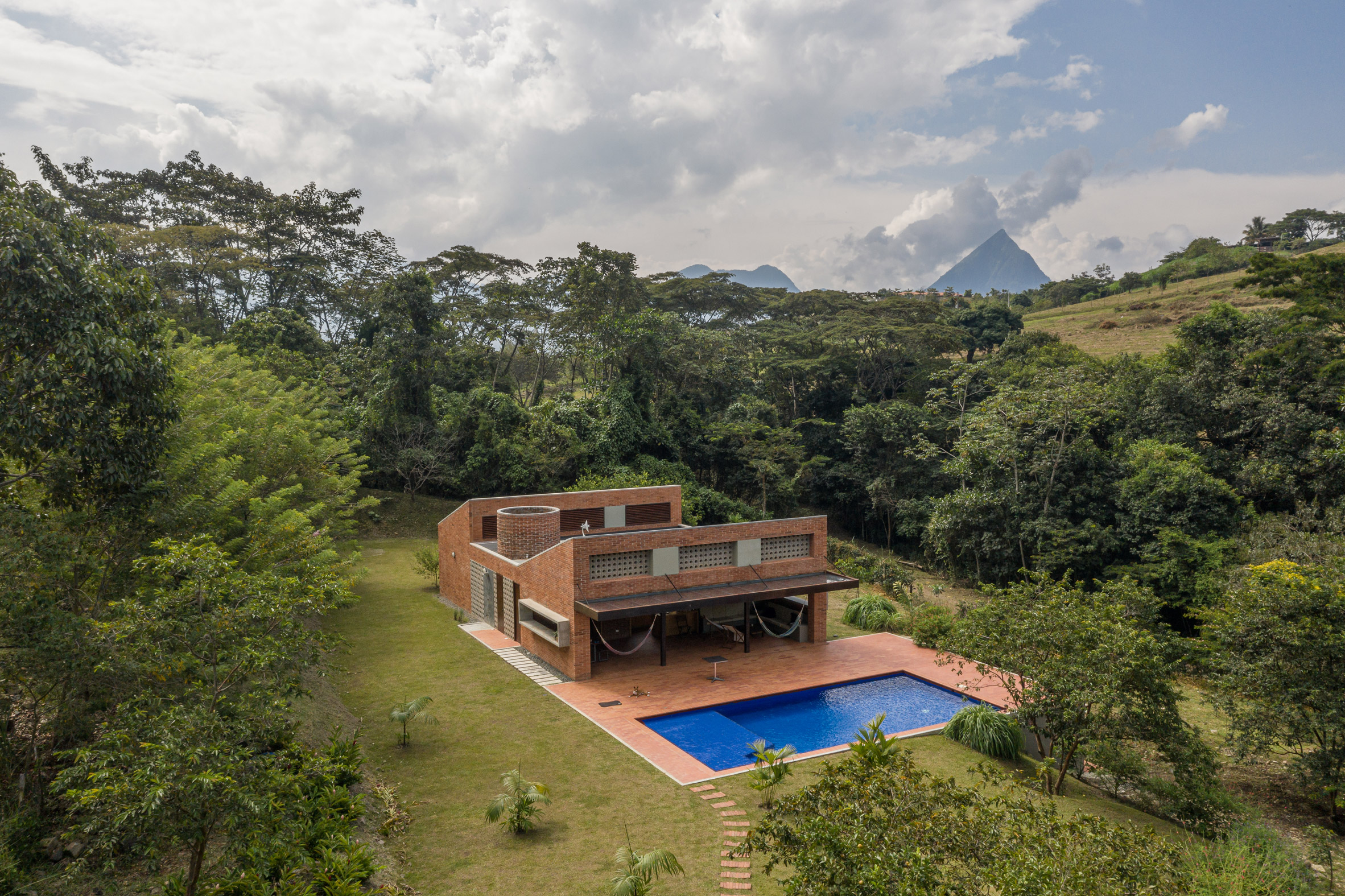 It is set in the tropical jungle on a narrow lot
It is set in the tropical jungle on a narrow lot
"We can have air currents crossing the building all the time," said Mesa.
"The blocks have this circular perforation. In some cases we cover the holes with circular glasses. But the majority are open."
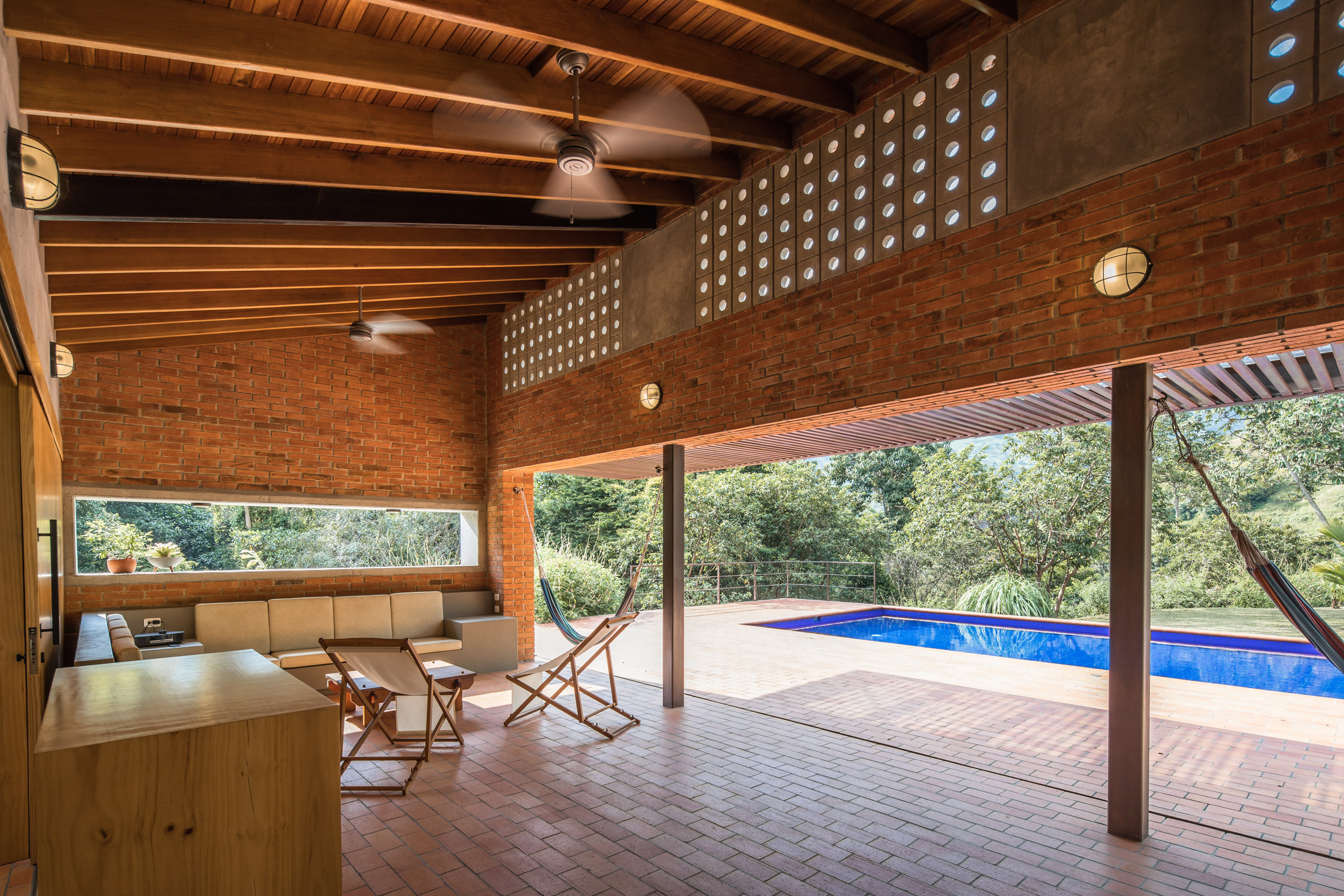 The double-height living room is permanently opened
The double-height living room is permanently opened
The main living space, which opens onto a terrace containing a pool, has an angled roof that rises to create a double-height space topped with perforated blocks to let in air and light.
This area contains the dining room and living room with the kitchen set into its rear wall.
[ 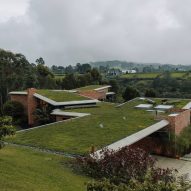
Read:
Casa Carmen's green roofs merge with hill and forest in Colombian neighbourhood
](https://www.dezeen.com/2020/08/19/casa-carmen-oa-house-colombia/)
A central courtyard separates this living space from the three enclosed bedrooms that are also topped with a sloped roof.
While the living area was designed to be permanently open, the kitchen can be closed off with a sliding wooden door and access to the courtyard and bedrooms sealed.
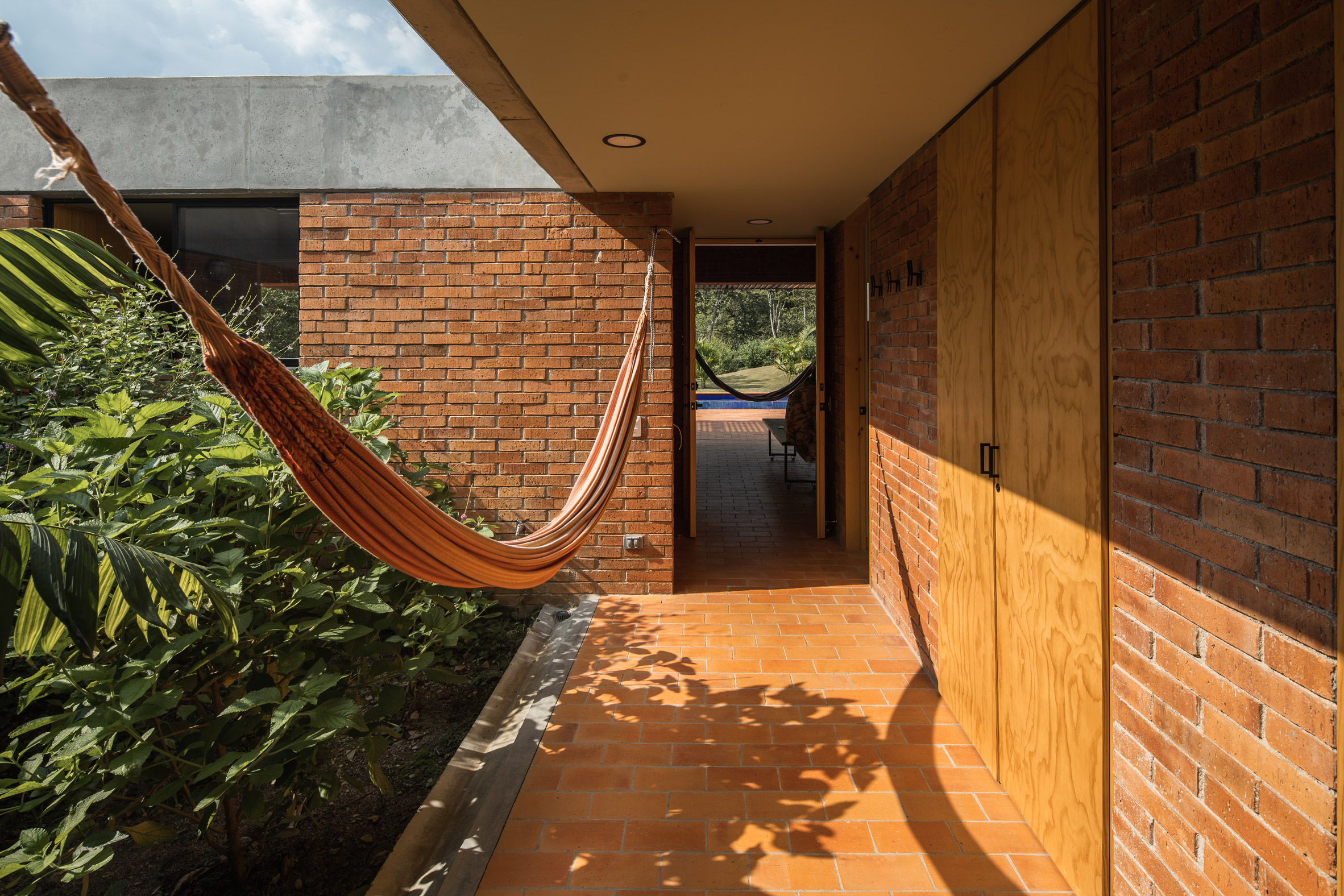 The main entrance leads into the courtyard
The main entrance leads into the courtyard
Alongside the garden courtyard are two further bathrooms and another bedroom.
"This sequence allows the house to function extroverted and open to the landscape, or introverted and focused on the courtyard," said Plan:b, who also noted that one aim of the layout was that the house never cast shadows on the swimming pool.
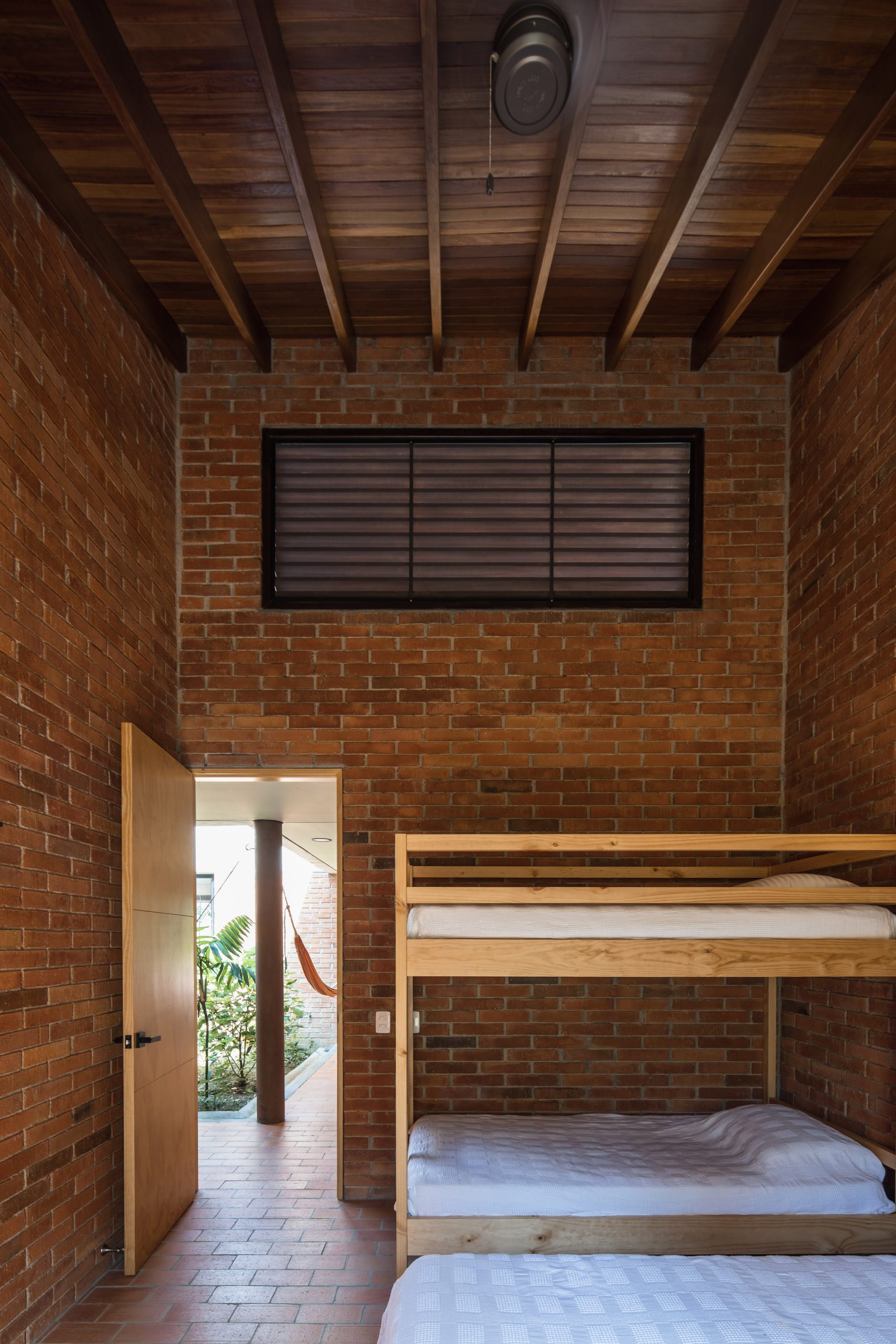 The bedrooms are accessed from the courtyard
The bedrooms are accessed from the courtyard
The home combines natural and more industrial materials. Its roof was made from local wood that is exposed throughout the interiors.
Steel beams support the mouth of the living area, and a "rusted steel" pergola protrudes towards the pool.
Concrete window frames jut out from long rectangular windows on both walls.
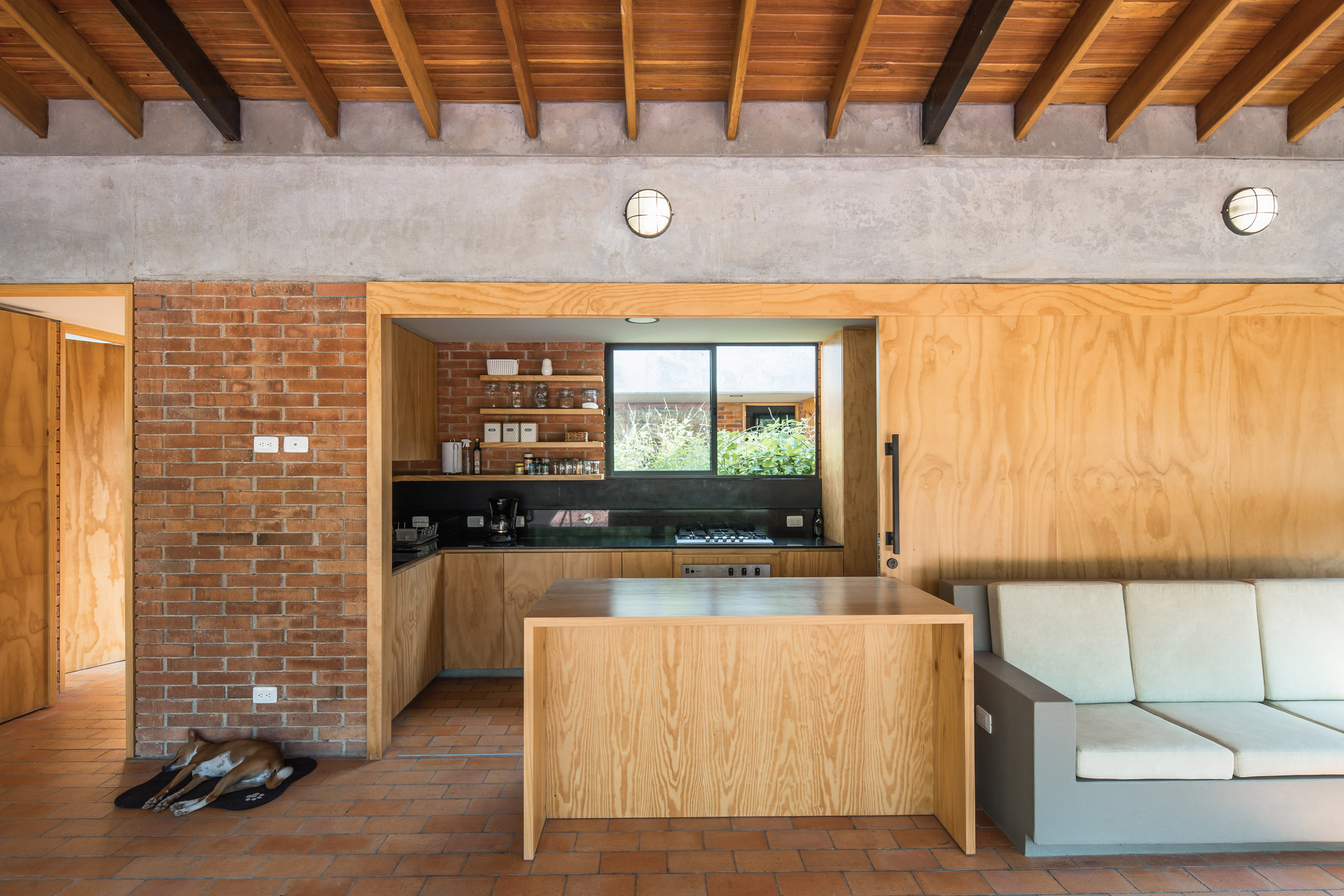 In the living area, the kitchen is accessible through a sliding wooden wall
In the living area, the kitchen is accessible through a sliding wooden wall
"The house has an appearance halfway between traditional housing construction and a small industrial building," added the Colombian architecture studio.
Alongside the holiday home, the pool area sits on a platform to deal with the incline, and from one edge of this patio handrails were placed to create a viewing station.
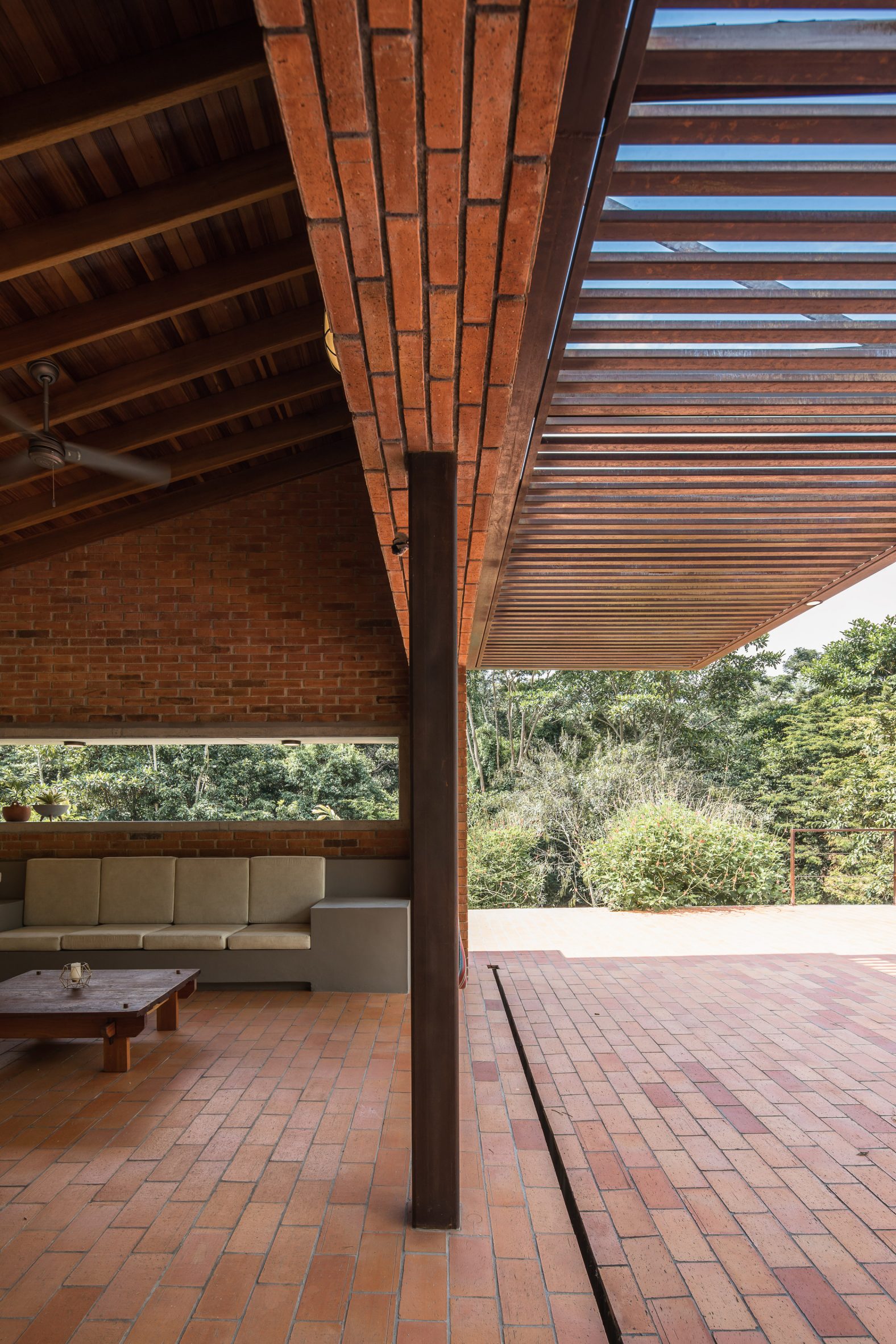 Steel beams and the pergola mark the transition to the outdoor space
Steel beams and the pergola mark the transition to the outdoor space
Felipe Mesa is an assistant professor at the Design School at Arizona State University where he recently oversaw students designing a covered outdoor classroom.
Other projects that include brick and perforations are a home in Vietnam with a triple-heigh atrium and this Bangladeshi mosque by Marina Tabassum.
The photography is byAlejandro Arango.
Project credits:
Architects: Felipe Mesa, Federico Mesa
Project Manager: Cristian Camacho, Verónica Mesa
Work team: Laura Kate Correa, Sebastián González, Leyre
Vicente
Structural Design: Plexus – Ingeniería Integral
The post Plan:b Arquitectos creates brick vacation home in Colombian tropical forest appeared first on Dezeen.
#all #architecture #residential #bricks #holidayhomes #perforations #colombia #planbarquitectos
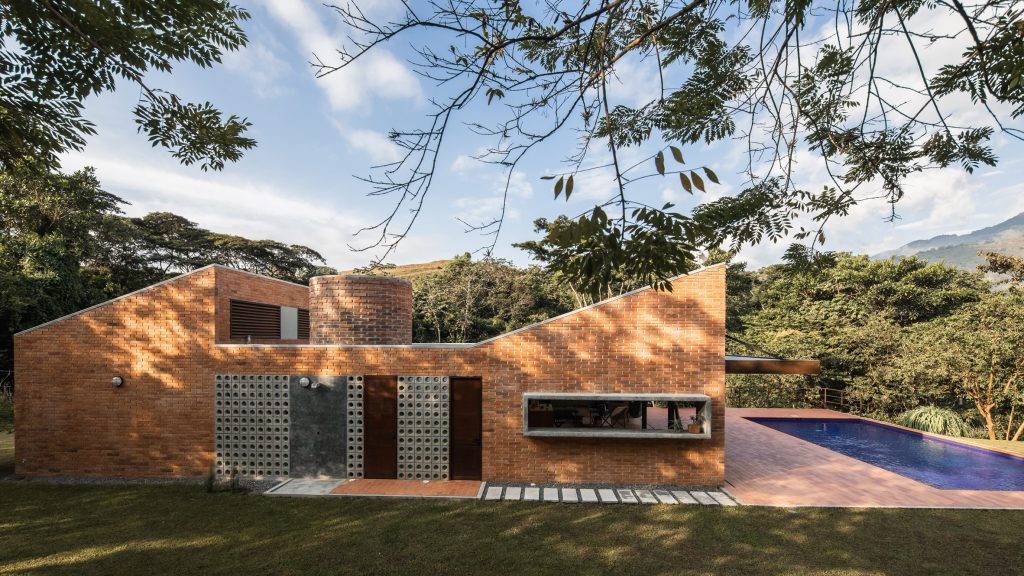
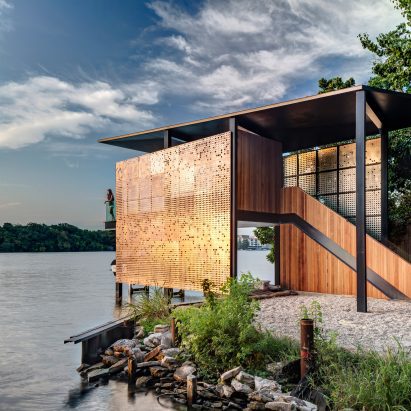
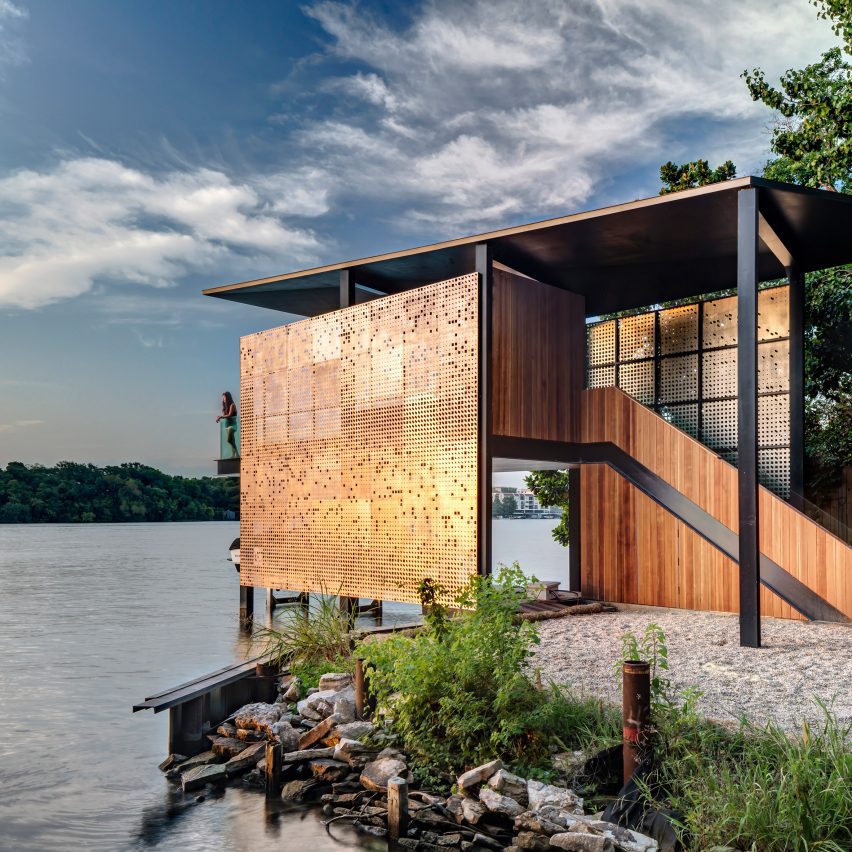
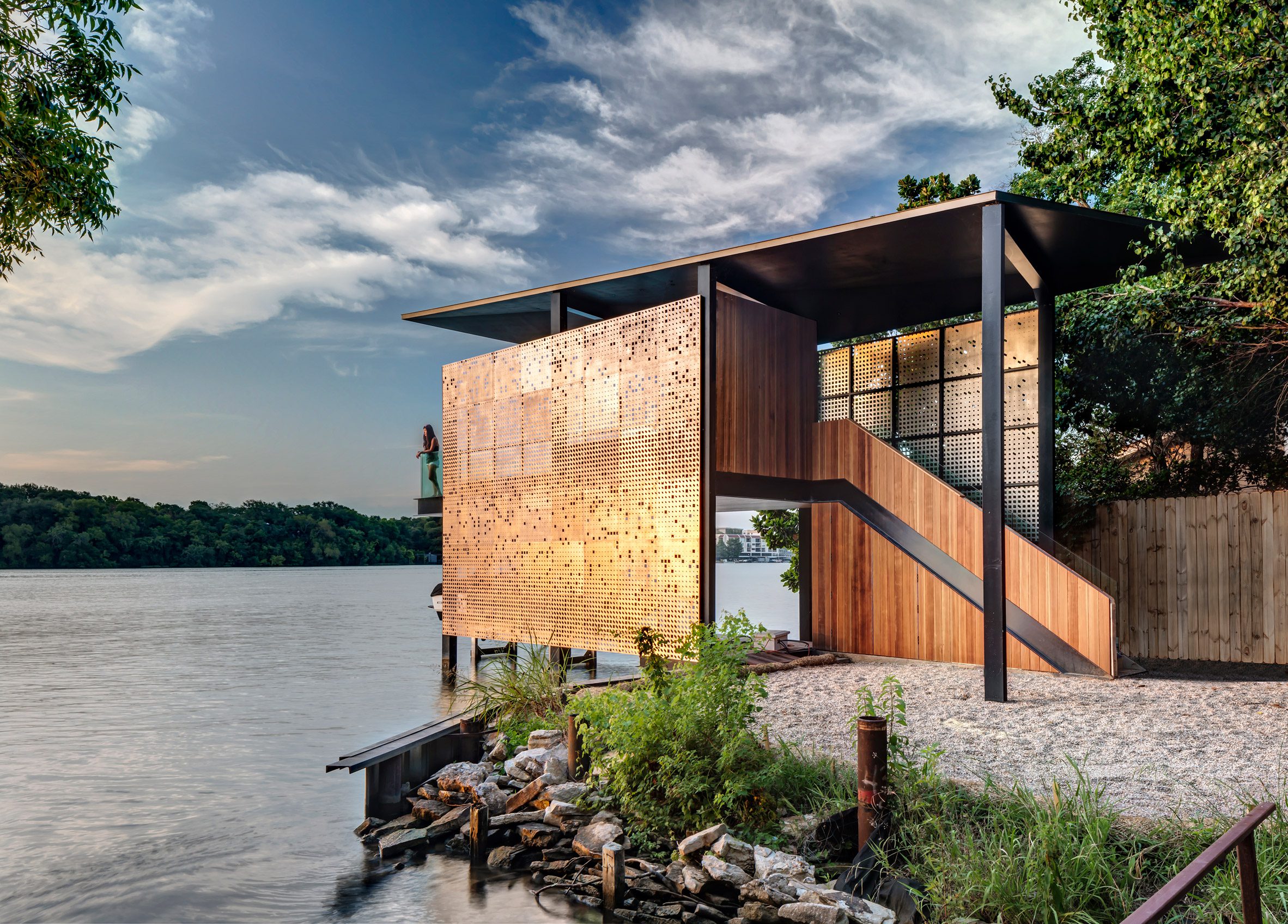 Filtered Frame Dock sits on the shore of a ravine
Filtered Frame Dock sits on the shore of a ravine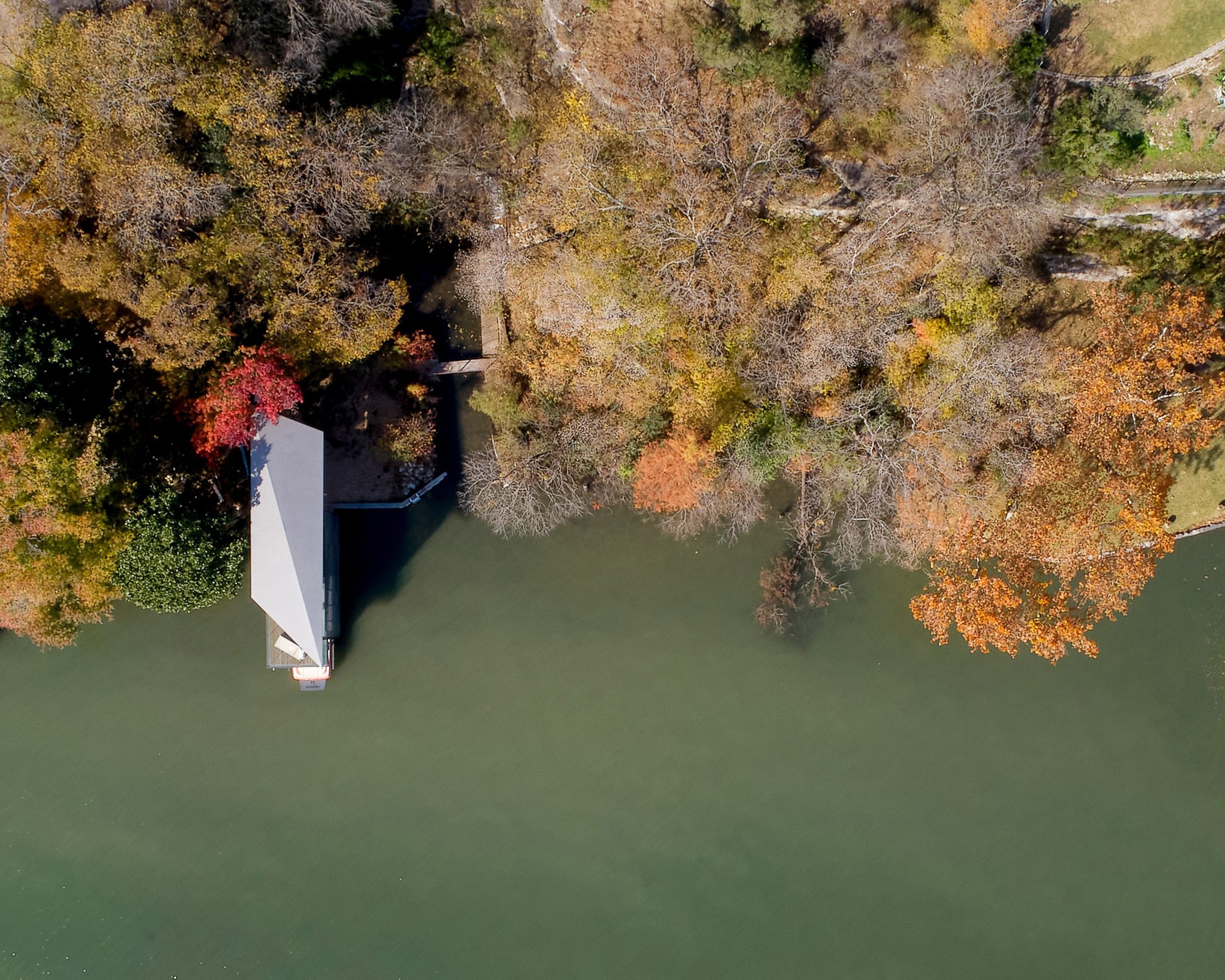 Two triangular planes form the boathouse roof
Two triangular planes form the boathouse roof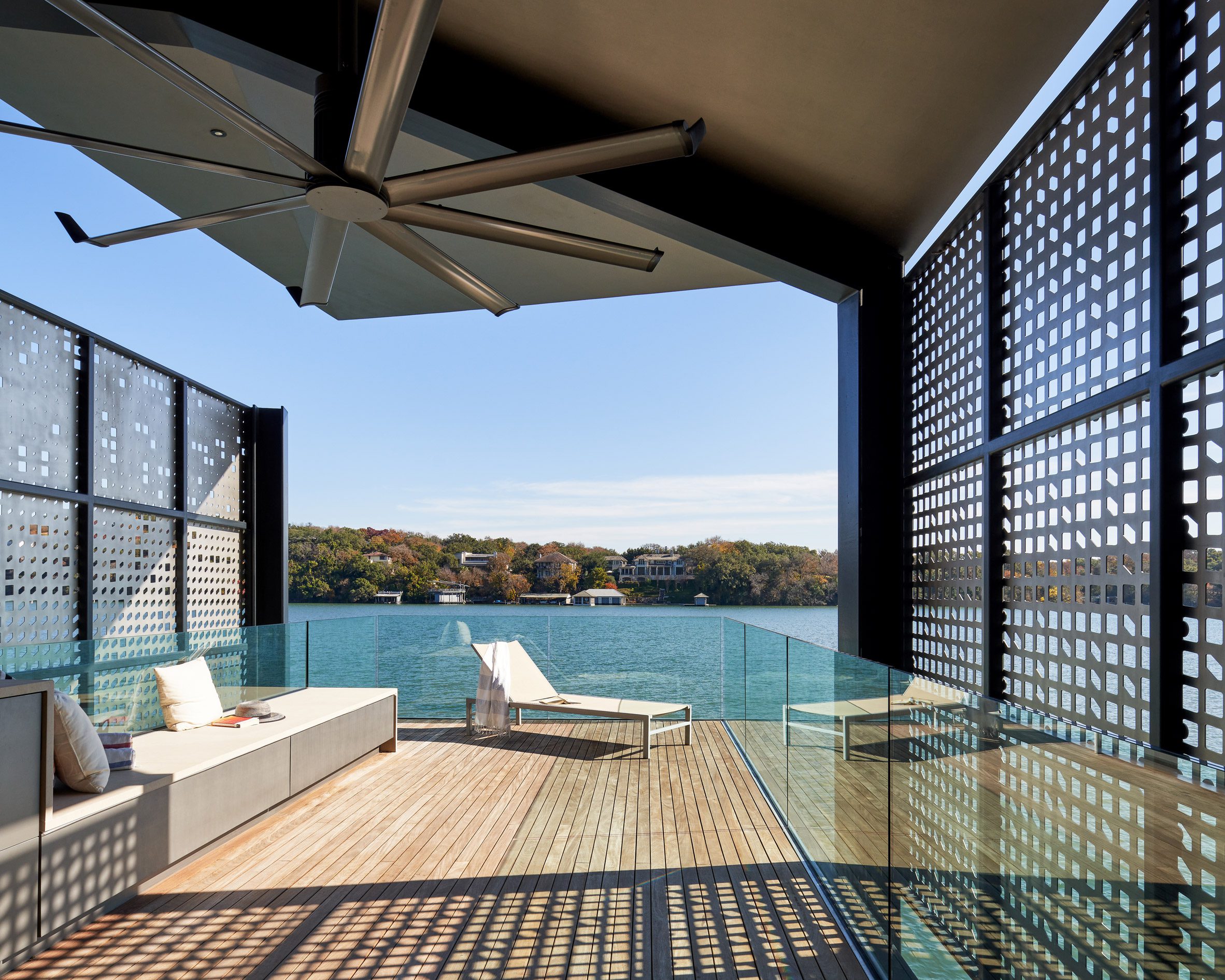 The upper deck is wrapped by glass balustrades
The upper deck is wrapped by glass balustrades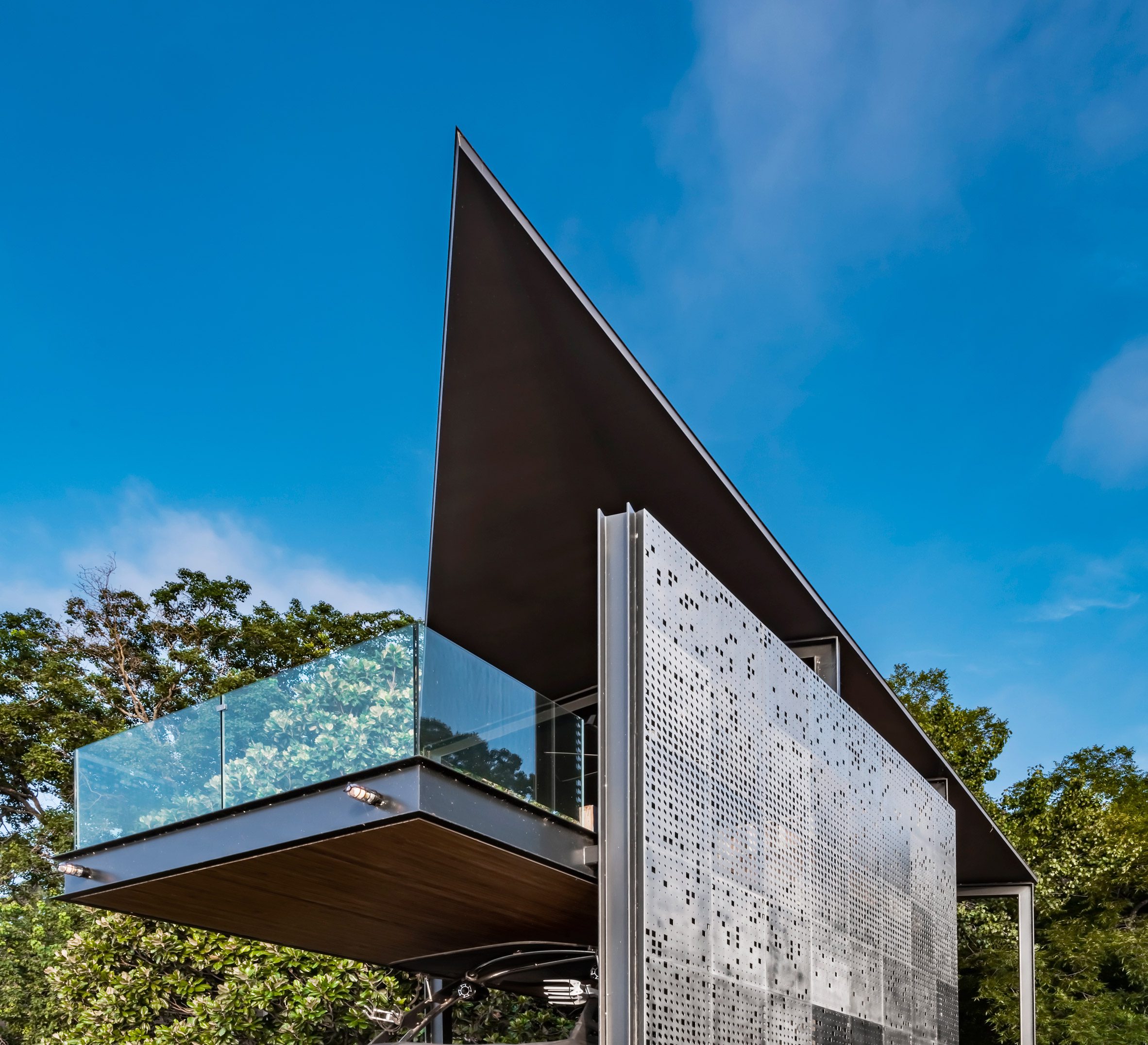 A small balcony juts out above the water
A small balcony juts out above the water